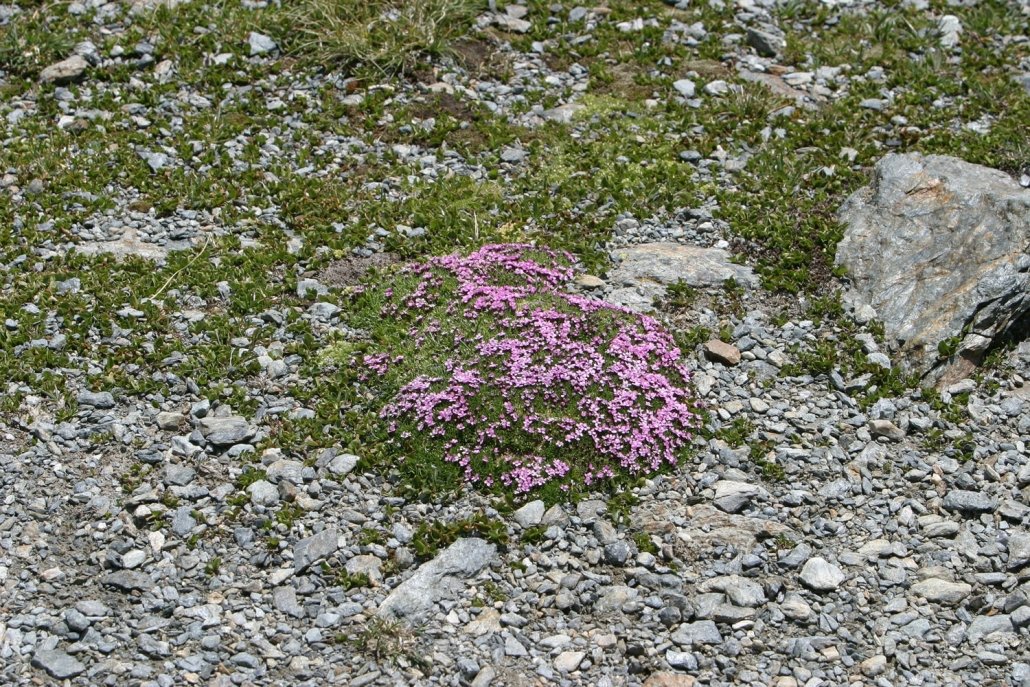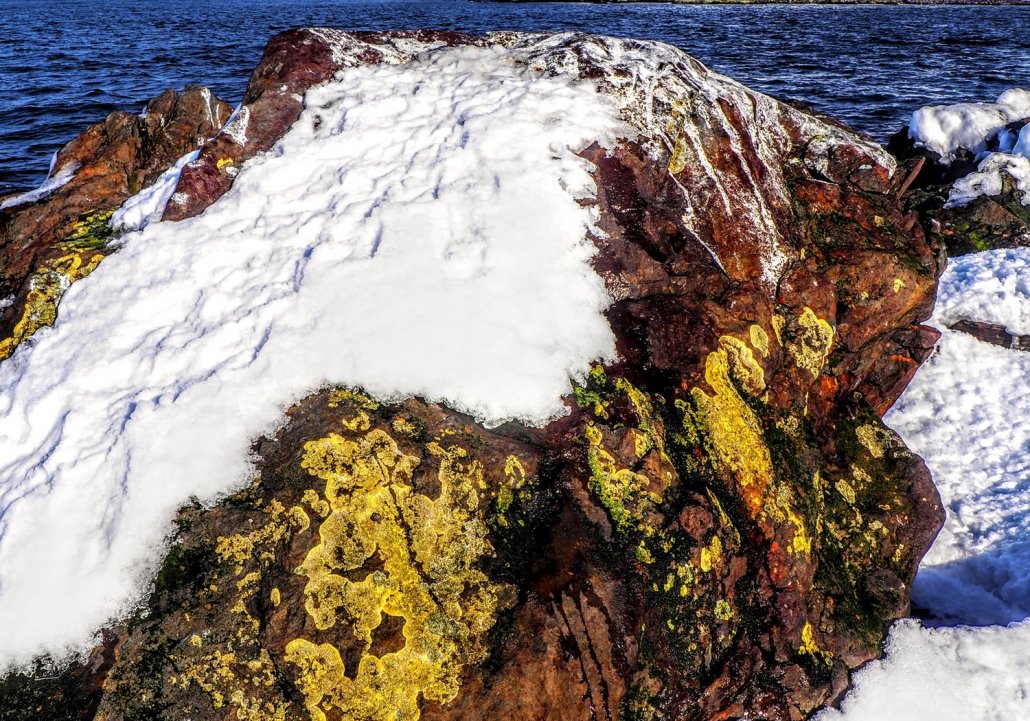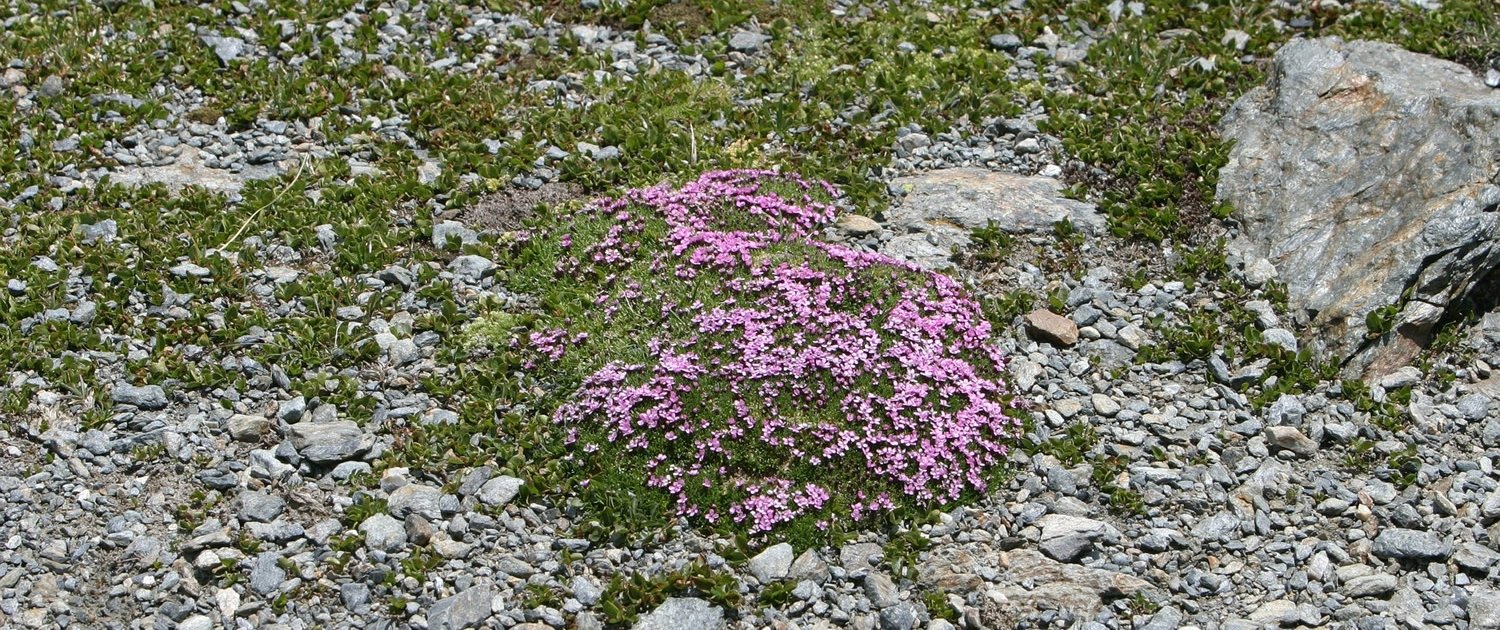How have plants adapted to cold environments?
For plants to survive in cold environments, they must adapt to extreme conditions.
Cotton grass has small seeds that the wind can quickly disperse to ensure survival. The low-lying grass helps reduce moisture loss caused by drying winds. As soon as the temperature decreases, it grows rapidly and produces seeds. It has thin leaves, which help reduce water loss caused by transpiration. It has shallow roots to access nutrients and water close to the surface within the active layer.
Cushion plants are low-growing, compact plants, which helps them retain moisture from drying winds. Also, they trap airborne dust, which provides a source of nutrients.

A cushion plant
Lichen does not require soil to grow. It can survive cold temperatures and can survive beneath the snow. It is slow growing, which reduces the amount of energy it requires.

Lichen in a tundra environment
Arctic poppies retain heat through their hairy stems. The Arctic poppy can also follow the sun to maximise the sunlight it receives, leading to increased photosynthesis. They also produce flowers very quickly when the snow is melting.
Hardy organisms such as mosses can cope with waterlogged conditions in the summer and survive the winter drought. This allows them to deal with the seasonal change from winter to summer when the active layer melts.
Related Topics
Use the images below to explore related GeoTopics.



